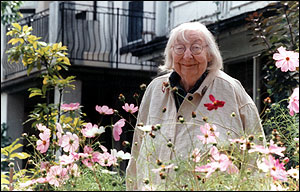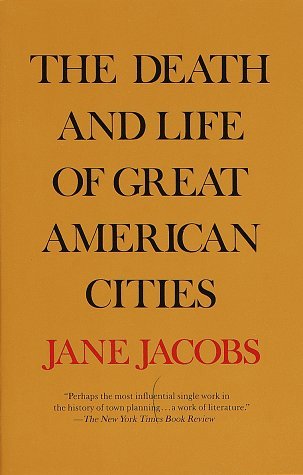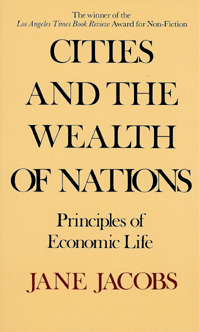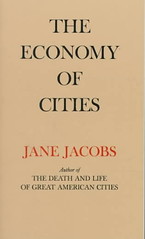Legendary urban philosopher Jane Jacobs has died at the age of 89
 DICK LOEK/TORONTO STAR. Legendary urban philosopher Jane Jacobs has died at the age of 89. She is pictured in her Toronto home in this 1997 file photo.
DICK LOEK/TORONTO STAR. Legendary urban philosopher Jane Jacobs has died at the age of 89. She is pictured in her Toronto home in this 1997 file photo.Ken Firestone alerts us to this report from the Toronto Star, "Jane Jacobs, 89: Urban legend." From the obituary, filed at 2:54 p.m.:
Jane Jacobs was a writer, intellectual, analyst, ethicist and moral thinker, activist, self-made economist, and a fearless critic of inflexible authority. Mrs. Jacobs died this morning in Toronto. She was 89. An American who chose to be Canadian, Mrs. Jacobs was a leader in the fights to preserve neighbourhoods and kill expressways, first in New York City, and then in Toronto...
Her first book, The Death and Life of Great American Cities, published in 1961, became a bible for neighbourhood organizers and what she termed the “foot people”. It made the case against the utopian planning culture of the times — residential high-rise development, expressways through city hearts, slum clearances, and desolate downtowns.
She believed that residential and commercial activity should be in the same place, that the safest neighbourhoods teem with life, short winding streets are better than long straight ones, low-rise housing is better than impersonal towers, that a neighbourhood is where people talk to one another. She liked the small-scale.
Not everyone agreed. Her arch-critic, Lewis Mumford, called her vision “higgledy-piggledy unplanned casualness.”...
Her view of cities startled long-held perceptions. In her 1969 book, The Economy of Cities, Mrs. Jacobs challenged the dogma of agricultural primacy and created a debate on both the economic growth and stagnation of cities. “Current theory in many fields — economics, history, anthropology — assumed that cities are built upon a rural economic base,’’ she wrote.
“If my observations and reasonings are correct, the reverse is true: that is rural economies, including agricultural work, are directly built upon city economies and city work.” “For me,” John Sewell, a former mayor of Toronto recalled, “the most significant influence was in terms of the notion that cities drive economies, not provincial or national governments.” ....
Mrs. Jacobs was no expert, bare of established credentials had limited formal education, but was a member of that wonderful school of amateurs — American writers who were observers, critics and original thinkers, including such names as Paul Goodman, William H. Whyte, Rachel Carson, Betty Friedan and Ralph Nader. ...
In 1958, after writing about downtowns for Fortune magazine, Mrs. Jacobs received a grant from The Rockefeller Foundation to write about cities. At the same time, she was creating havoc with developers, planners and politicians who wanted to put a highway through New York City.
Jason Epstein, her long-time editor at Random House and co-founder of the New York Review of Books, recalled that the proposed expressway had nothing to do with moving traffic. “It would be devastating to the city,” he said. “The reason to build it was that it was eligible for federal highway funds because it connected New Jersey to New York.
“It meant jobs for the construction industry, lots of money for politicians and architects who benefit from those things, and probably for real estate developers who would pick up on the fringes. (Sound familiar? Remember the construction industry and labor union campaign in favor of the baseball stadium?)
“It took 12 years for Jane to finally stop this thing,” Epstein recalled. “She was arrested at one point and charged with a couple of felonies and was in serious trouble. At one point she was thrown in jail.” (Part of this battle is described in a chapter of The Living City by Roberta Gratz.) ...
For the most part, Mrs. Jacob’s books were an intellectual progression, each taking her thoughts on cities and economies a step further. “She moved beyond planning to look at the city as economic generator,” commented Christopher Hume, urban affairs writer for The Star.
“Eschewing jargon and received wisdom, she possessed an extraordinary clarity of mind that enabled her to reveal truths so obvious they were in visible to the rest of the world.”



Index Keywords: urban-design-placemaking



0 Comments:
Post a Comment
<< Home